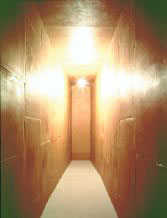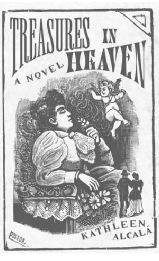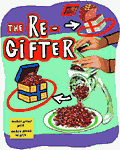“IN DAYS OF YORE nothing was sacred but the beautiful.” Carved in stone above a doorway in the Henry Art Gallery, this utterance seems to emanate from the rock itself, conveying a wistful longing for wholeness that at once validates and interrogates the very endeavor of making art. That we still find sacredness in the beauty of art may surprise the stone. That a stone should speak, or even dream, does not surprise Wolfgang Laib.
Wolfgang Laib: A Retrospective
Henry Art Gallery ends May 6
You Will Go Somewhere Else, the title of the first piece in “Wolfgang Laib: A Retrospective,” aptly describes this internationally acclaimed German artist’s deceptively simple oeuvre. Just as love’s strange alchemy makes us feel most ourselves when utterly transported, so Laib transforms organic, quotidian materials such as beeswax, pollen, milk, and rice into works that simultaneously embody and transcend their inherent nature.
You enter to a journey: Vessel-shaped, dark brown beeswax blocks held high in the air on heavy wooden scaffolding suggest coffins or canoes.
Look left: A staircase of beeswax leads to nothing.
Turn a corner: Emerge into a dazzling cathedral so purely white it stuns you, stills you.
Here are the vessel-shapes turned over, little houses filled with rice.
Here is a chamber of amber beeswax, filled to bursting with fragrant sweetness.
Here carved, polished stones seem to float above their base like ships on water.
The gray floor’s skin pulses and ripples, pulling your shadow deep into itself as a pond drinks rain.
Beyond the wall lies a twin skin: sifted pollen from hazelnut; yellow being nothing but itself; the power of creation made palpable. Shimmering, dancing, numinous.
Where are you now?
In an age when the average amount of time we spend “looking” at a work of art is 30 seconds, what are we to make of The Five Mountains Not to Climb On, mounds of pollen so small they could be crushed by a footstep, so fragile they must be protected by Plexiglas? Is it possible to even imagine of this work, as Rilke said of Cezanne’s, “Not since Moses has anyone seen a mountain so greatly”? As we circle around the Milkstone, there is no text to tell us what to think, no message to be received, simply a white square in which milk and marble meet with such perfection it is impossible to tell where one ends and the other begins.
The pieces, however, are not merely clever riddles. Nor do they partake of the postmodern, ironic “wink, wink, nudge, nudge” that seems to characterize so much contemporary art. Rather, they are quiet gifts from a man who has chosen to live a life of simplicity and attention, ceremony and ritual, who asks nothing in return except that we do the same, if only for a little while. To this end (and with superb help from the Henry’s staff), Laib painstakingly and deliberately arranges his installations from floor to ceiling, much as a poet orders words on a page. It is not just the words themselves but the white space around them, their relationship to one another, and, finally, what we do with them—and what we allow them to do to us—that creates meaning.
IT’S TEMPTING TO MAKE that meaning political, especially here in the Northwest, where we have fought hard to preserve and purify our natural surroundings. But Laib maintains that “politics is for the day; art is for the centuries. It’s not about organic or not organic, or repairing what was damaged. I’m not trying to cure what others made bad.” Indeed, after spending three months carving a large stone he found near his rural home, Laib, who had gone to medical school, chose to become an artist instead. Art, he says, “included everything I was dreaming of.”
A slight, bespectacled man attired in a gold sweater and faded brown cords that make him look like a walking version of his own artwork, Laib radiates a centered calmness. There is an innocence about him, but he is not unworldly: “Others may think it is totally naive, but I have to say you can change things, it’s true; you only have to want it. When people see a pollen piece in front of them, there is something going on emotionally; they begin to think and question, and that is very beautiful. It happens anywhere in the world, in different cultures, different situations.”
In asking us to be fully present, Laib asks a lot of us. What we get in return is astonishingly powerful and wondrously nourishing. Though his work is intentionally impersonal, based on materials and forms common to many cultures, it cannot help but be imbued with his process. When asked what he experiences while making art, he replies, “Extreme joy—beauty becomes real joy.”









